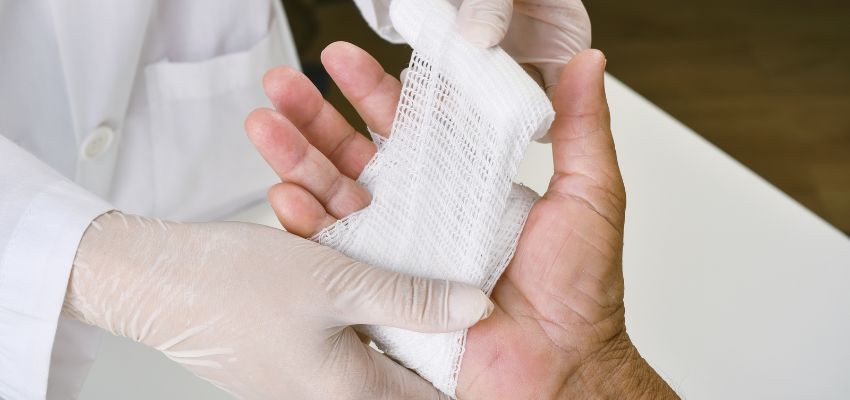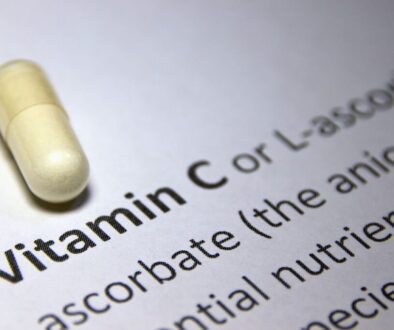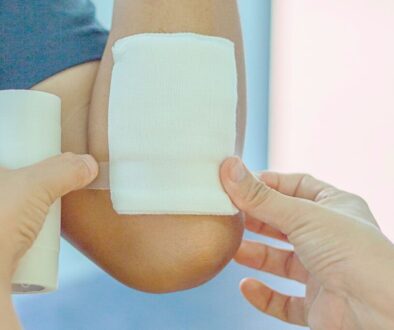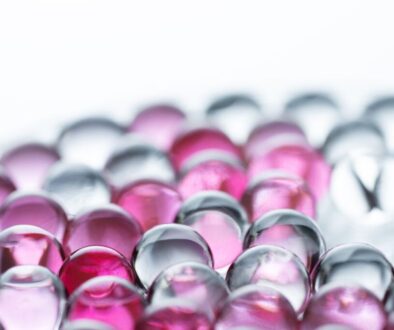Cytokines For Tissue Repair In Wound Healing Innovations
Did you know that the secret to faster, more effective wound healing lies in harnessing the power of your body’s signaling molecules? Wound healing is a complex process; when disrupted, recovery can become slow and frustrating. That’s where cytokines for tissue repair come in. These molecules play a key role in tissue repair and healing. Recent breakthroughs have clarified their function, opening doors to new therapies that could improve healing outcomes.
In this article, we’ll explore the role of cytokines in tissue repair and wound healing. We’ll look at the main cytokines behind these processes. We’ll examine new therapeutic breakthroughs and discuss the challenges in maximizing the potential of cytokine-based treatments.
The Role Of Cytokines In Tissue Repair
Cytokines are small proteins produced by immune and other cells that serve as essential messengers within the body. They help cells communicate and coordinate immune responses. They also influence key processes like cell growth, movement, and specialization, which are crucial for tissue repair.
The Phases Of Wound Healing
Wound healing is a complex mechanism that occurs in four overlapping stages:
- Hemostasis and Coagulation. The process starts with the formation of a fibrin clot, which stops bleeding and provides a framework for cells to migrate. Repair begins from there.
- Inflammation. Immune cells activate to clear debris and eliminate pathogens. They release pro-inflammatory cytokines to support tissue recovery.
- Proliferation. Granulation tissue forms. New blood vessels develop through angiogenesis. The wound surface is restored through re-epithelialization.
- Remodeling and Scar Formation. Collagen fibers reorganize to strengthen the repaired tissue. Inflammation decreases. A mature scar forms.
Each phase plays a vital role in restoring tissue integrity and function.
The Role Of Cytokines In Each Phase Of Healing
Cytokines are critical players in every stage of the healing process, each serving a specific purpose:
- Inflammation Phase. Cytokines like interleukin-1 (IL-1) and tumor necrosis factor-alpha (TNF-α) are key. They attract immune cells to the wound, activating the body’s defense and repair processes.
- Proliferation Phase. Key cytokines, such as vascular endothelial growth factor (VEGF) and platelet-derived growth factor (PDGF), are crucial. They promote the development of new blood vessels and the extracellular matrix, essential for tissue regeneration.
- Remodeling Phase. Anti-inflammatory cytokines, like interleukin-10 (IL-10), reduce inflammation and support tissue remodeling and recovery.
By organizing these complex interactions, cytokines ensure a coordinated and efficient healing process.

Key Cytokines In Wound Healing
Cytokines are essential for wound repair. They fall into three main categories: pro-inflammatory, anti-inflammatory, and growth factor-like agents. Each category contributes uniquely yet synergistically to the healing process.
Pro-Inflammatory Cytokines (e.g., IL-1, TNF-α)
Pro-inflammatory cytokines initiate the body’s defense mechanisms by triggering the inflammatory response. They recruit immune cells, such as neutrophils and monocytes, to clear pathogens and debris from the wound site. TNF-α activates immune cells and regulates other cytokines. This amplifies the response to ensure effective wound cleansing.
Anti-Inflammatory Cytokines (e.g., IL-10, TGF-β)
Anti-inflammatory cytokines like IL-10 and transforming growth factor-β (TGF-β) help resolve inflammation and prevent tissue damage. They support the shift from inflammation to tissue repair. TGF-β plays a key role by recruiting fibroblasts and promoting collagen synthesis. It also regulates extracellular matrix remodeling, which is essential for wound healing.
Growth Factors As Cytokine-Like Agents (e.g., VEGF, PDGF)
Growth factors are potent drivers of cell proliferation, angiogenesis, and matrix synthesis. VEGF promotes the formation of new blood vessels, ensuring adequate oxygen and nutrient delivery to the wound. PDGF supports fibroblast migration. It boosts extracellular matrix production. Together, these processes create a stable foundation for tissue repair and regeneration.
Advances In Wound Healing Therapies Through Cytokines
Researchers are using advances in cytokine biology to create new therapies. These treatments aim to speed up tissue repair and improve healing for complex wounds.
Topical Cytokine Applications
Cytokines and growth factors are used in topical treatments for chronic wounds. An example is platelet-derived growth factor (PDGF). These treatments help with wounds like diabetic ulcers. They activate fibroblasts and promote angiogenesis. They also support the growth of healthy granulation tissue, which helps jump-start healing in wounds that are slow to recover.
Amniotic tissue allografts, such as those available through DonorCure, are also being used topically. Rich in natural cytokines and growth factors, they enhance tissue regeneration and provide anti-inflammatory benefits for chronic and acute wounds.
Controlled Cytokine Delivery With Biomaterials
Innovative biomaterials, including hydrogels and bioactive scaffolds, are being developed to deliver cytokines directly to wound sites. The materials allow controlled and sustained cytokine release. Key cytokines, like TGF-β and VEGF, are gradually released, ensuring prolonged therapeutic effects and better healing conditions.
Gene Therapy For Cytokine Modulation
Gene therapy is emerging as a cutting-edge approach to directly regulating cytokine activity. Viral vector delivery of genes encoding cytokines like VEGF is showing promise. It helps stimulate angiogenesis and improves wound healing rates, which is especially effective in difficult-to-treat cases.
Researchers are revolutionizing wound care with cytokine-based strategies. These advancements bring new hope to individuals with complex healing journeys.
Challenges And Future Directions In Cytokine-Based Therapies
Cytokine-based treatments show great promise. However, several challenges remain. Improving their efficacy and accessibility is essential.
Striking The Balance Between Inflammation And Regeneration
Effective healing requires a delicate balance between pro-inflammatory and anti-inflammatory cytokines. Excessive inflammation can damage tissue, while an inadequate response may slow healing. Achieving this balance will require personalized interventions to tailor therapies to individual needs.
Enhancing Cytokine Stability And Delivery
Cytokine-based therapies face significant challenges. They have a short half-life and degrade quickly in the body. Advancements in stabilization and innovative delivery systems are key to unlocking their potential.
Amniotic tissue allografts help overcome these challenges by offering a stable, cytokine-rich matrix that supports long-term healing and reduces the need for repeated application.
Personalized Medicine Through Cytokine Profiling
The wound-healing process varies significantly from person to person. New approaches like cytokine profiling and precision dosing focus on customizing treatments. They consider each wound’s unique traits and the patient’s condition. These personalized strategies could transform care and improve outcomes for many patients.
Frequently Asked Questions
Are cytokines and growth factors the same?
Not quite. While cytokines and growth factors share similarities, their functions differ. Cytokines have various signaling roles. Growth factors mainly promote cell growth and division. Some growth factors, like VEGF and PDGF, behave like cytokines. This is especially true during wound healing.
Can cytokine therapies aid in chronic wound treatment?
Cytokine-based therapies offer promising solutions for chronic wounds. Molecules like TGF-β and IL-10 are being studied. They help regulate persistent inflammation and support tissue repair in non-healing wounds.
Are there side effects to cytokine-based wound treatments?
Cytokine therapies are effective but can cause excessive inflammation or fibrosis when overactive. Researchers are working to improve dosing and delivery, reducing risks and enhancing benefits.
How are cytokines delivered in clinical settings?
Cytokines can be given differently based on the wound type and goal. They can be applied topically or delivered systemically. Advanced methods like biomaterials allow for controlled release.
Which cytokines hold the most potential for future wound healing research?
Research identifies VEGF, PDGF, IL-10, and TGF-β as candidates for advanced wound therapies. Current efforts focus on creating synthetic and recombinant versions. These aim to improve clinical effectiveness and accessibility.

Unlocking The Healing Power Of Cytokines: A New Era In Wound Care
Cytokines are the unsung heroes of wound healing, playing a crucial role in orchestrating every phase of tissue repair. Advances in cytokine-targeted therapies bring new hope for healing. Cytokines for tissue repair show promise in treating chronic wounds and impaired healing. However, challenges remain. Delivery, stability, and personalized medicine need further research. Unlocking cytokine biology can lead to innovative treatments. These breakthroughs could transform wound care.
Support healing at the cellular level—explore amniotic tissue allografts from DonorCure and join the movement advancing regenerative medicine today.
Heal Ulcers, Burns, & Surgery Wounds With Break-Through Amniotic Allograft Treatments
Experience the future of wound care with our advanced amniotic allograft treatments. Say goodbye to slow healing. Our innovative solutions promote faster recovery from pressure wounds, ulcers, burns, and surgical wounds. Trust the power of science for your healing journey. Regain your comfort and health today! See if you are eligible for treatment here.

About The Author
Corinne Grace is a full-time writer living in the Philippines. She has a nursing degree from Riverside College. Her background in nursing informs her perspective, allowing her to weave in themes of health, empathy, and resilience into her work.




